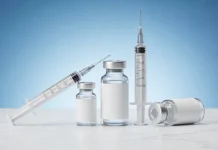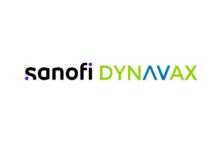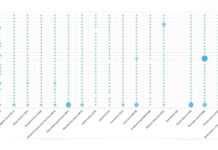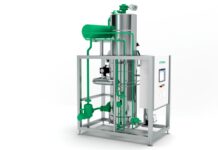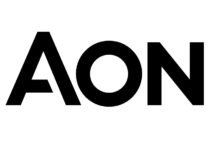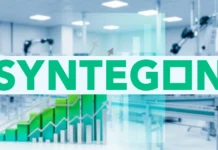In the complex and unforgiving world of pharmaceutical logistics, every degree matters. The temperature-controlled pharma packaging market happens to stand as a silent guardian of product integrity, making sure that the life-saving drugs, vaccines, biologics, and specialty formulations survive the ever-turbulent journey right from the production floor to the patient. The fact is that these are not ordinary commodities; they happen to be molecularly very delicate, often irreplaceable therapies whose efficacy can get destroyed just because of a few moments of temperature deviation.
The fact is that the rise of the market has been nothing short of transformative, driven due to the convergence of three critical forces – the unmatched growth of temperature-sensitive pharmaceuticals, the tightening grip when it comes to the global regulatory framework, and the rise of technological innovation, which redefines packaging and cold chain infrastructure. In an era where biopharmaceutical breakthroughs go on to dominate the R&D pipelines of certain major drugmakers, the temperature-controlled pharmaceutical packaging market has gone on to evolve from a logical afterthought into a much more robust strategic necessity, thereby being integral to safeguarding the quality of the product, extending the shelf life, and also making sure that patient safety remains throughout geographies.
Market trajectory and major dynamics
The global temperature control pharma packaging market is all set to grow from an anticipated $14.5 billion in 2025 to almost $30 billion by 2035, thereby reflecting a CAGR of a very healthy 7.5% in the forecast period. This kind of sustained progress is fuelled due to the rising global demand when it comes to temperature-sensitive pharmaceuticals, very rigorous regulations, and fast innovation in both passive and active packaging tech. The sector is also benefiting from the intensified focus of pharmaceutical companies when it comes to quality assurance as well as supply chain resilience.
It is well to be noted that the passive temperature control systems are expected to command almost 59% of the market share in 2025. This kind of dominance lies in their cost-effectiveness, adaptability, and dependability with insulation materials, such as gel packs, vacuum insulated panels (VIPs), and phase change materials (PCMs) playing a very critical role. While the passive system traditionally went on to lack the adaptability when it came to active systems, the ongoing innovation has narrowed this level of gap with reusable, lighter, and more eco-conscious designs that are steadily shaping the industry benchmarks.
From the perspective of temperatures, range shipments that require less than 10°C are anticipated to represent almost 45% of market demand in 2025, which is driven mostly by the cold storage requirements of biologics, vaccines, and specialty pharmaceuticals. Digital monitoring devices, enhanced data analytics, and even IoT-based monitoring are helping the shippers in order to maintain their thermal stability with unmatched precision.
Regional realities along with growth drivers
United States
It is worth noting that North America stands as one of the most mature markets when it comes to temperature-controlled pharmaceutical packaging, with the United States leading the pack. The pharmaceutical sector of the country, which is bloated by biologics, specialty drugs, and vaccines, is increasingly adopting advanced packaging tech. Regulatory compliance teamed with the requirement for ultra-low temperature storage when it comes to cell and gene therapy is indeed fostering the demand for high-performance solutions. Phase-change materials along with vacuum-insulated panels are elevating the product balance during transit. The US market is expected to grow at a CAGR of almost 7% between 2025 and 2035, hence highlighting a very balanced and innovation-led expansion.
United Kingdom
In the UK, the progress has been fast, which is underpinned by strict regulatory oversight from the medicines and healthcare product regulatory agency – MHRA as well as the European medicines agency – EMA. Demand when it comes to high-performance insulated shipping containers has grown, especially for vaccine and biologics exports. The adoption when it comes to IOT enabled temperature monitoring systems throughout the pharmaceutical supply chain in the UK is enhancing the real-time tracking as well as lessening the temperature excursion barrier. The UK market is anticipated to register 7.5% CAGR throughout 2025 and 2035.
European Union
While North America at present leads the global spectrum, the European Union is not far behind and is gaining ground due to an intense focus when it comes to sustainability as well as sticking to the good distribution practice – GDP policies. The key markets like Germany, the Netherlands, and France are growingly adopting reusable thermal shippers as well as vacuum-insulated packaging in order to balance the environmental considerations with stringent temperature controls. The EU market is anticipated to achieve a 7.6% CAGR all through 2035.
Japan
The pharmaceutical sector of Japan, which is marked by its stress on biologics as well as regenerative medicine, is making its cold chain infrastructure more robust. The pharmaceutical and medical devices agency puts in place certain rigorous quality benchmarks, thereby enhancing the adoption of sophisticated packaging solutions. Investments in phase gel packs, along with smart indicators and, of course, the growing use of single-use packaging formats, are all enabling the market in Japan to grow at 7.5% CAGR.
South Korea
The flourishing biologics and biosimilars sector in South Korea is a driving force when it comes to the temperature-controlled packaging market. The government policies are also encouraging the pharmaceutical exports to both Europe and North America, while the fast expansion of digital health platforms along with e-pharmacies is also creating an additional demand for packaging that is thermally stable. Regulatory compliance pressures within the global life sciences industry are also prompting a growing usage of RFID-enabled packaging so as to get real-time tracking. The market in South Korea is expected to expand at a 7.6% CAGR between 2025 and 2035.
Sustainability, innovation, and smart packaging are important factors to consider
It is well to be noted that the future of the temperature-controlled pharma packaging market happens to depend on consistent innovation, and the development within PCMs, VIPs, and expanded polystyrene (EPS) materials are making the packaging more effective, lighter, and growingly recyclable. Sustainability happens to be evolving right from being a niche differentiator to being a baseline requirement, with reusable containers as well as biodegradable insulation gaining a lot of ground. Smart packing technologies with integrated GPS, RFIDs, and data logging are turning the containers into trackable and intelligent assets, which elevate transparency along with compliance.
What are the challenges?
In spite of the growth prospects, the market faces prominent barriers. Higher upfront costs, especially when it comes to advanced active systems, can minimize widespread adoption. Infrastructure disparities within emerging economies go on to present a hurdle in terms of the integrity of the cold chain, specifically when you talk of rural or remote regions. Besides, the constant evolution when it comes to pharmaceutical products, many of which need tighter temperature tolerances, demands ongoing adaptation from packaging providers. But the industry is taking care of these challenges by way of AI-driven route optimization, collaborative partnerships throughout the logistics value chain, and blockchain-based traceability.
In the end
Right from safeguarding the mRNA vaccines during a global health crisis to helping the precise delivery in terms of next-generation therapies, the temperature-controlled pharma packaging market happens to be more than a logistics segment. It is a crucial enabler of modern medicines. With demand all set to almost double by 2035, industry stakeholders have to continue refining the balance when it comes to performance, expenditure, and environmental stewardship. For market leaders, the path forward lies in making utmost use of technological innovation, advancing the sustainability element, and also syncing along with the evolving requirements of the globalized healthcare spectrum.


